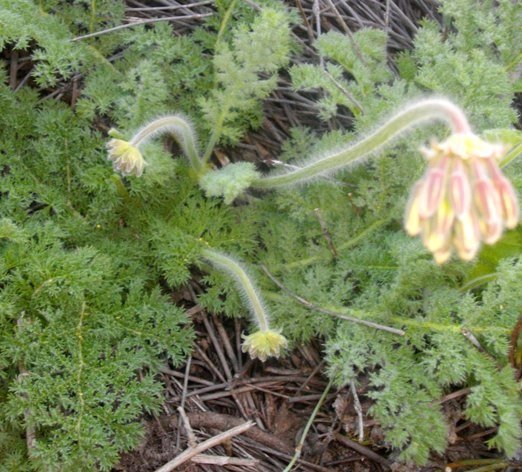Pelargonium triste

Author: Ivan Lätti
Photographer: Ivan Lätti
Pelargonium triste, the night-scented pelargonium or in Afrikaans colloquially the kaneeltjie (little cinnamon) or rooiwortel (red root), is a tuberous perennial that occasionally reaches 50 cm when in flower. The bark of the large tuber is notably cracked and woody. These tubers were used in Namaqualand in the past for tanning leather. The plant resprouts after fire.
The nocturnal fragrance of the flowers reminds of cloves, probably confused with cinnamon by the name-givers? The scent is, however, sometimes also described as resembling cinnamon, or called musky. Not all smells have distinct labels, confusion tending to follow. Categories of sights and sounds are more comprehensively and extensively developed and labelled than smells or sensations of touch and pain. Night-time fragrance reinforces the idea that the pollinators in this case are long-tongued moths.
The plant is found in a broad coastal swathe from the west of the Northern Cape around Steinkopf in Namaqualand to the Cape Peninsula in the Western Cape and eastwards across the Little Karoo as far as Uniondale; along the coast to Albertinia.
The habitat is sandy or loamy flats and lower slopes. The habitat population is deemed of least concern early in the twenty first century (Curtis-Scott, et al, 2020; Vlok and Schutte-Vlok, 2015; Manning, 2007; Bean and Johns, 2005; iNaturalist; http://redlist.sanbi.org).

